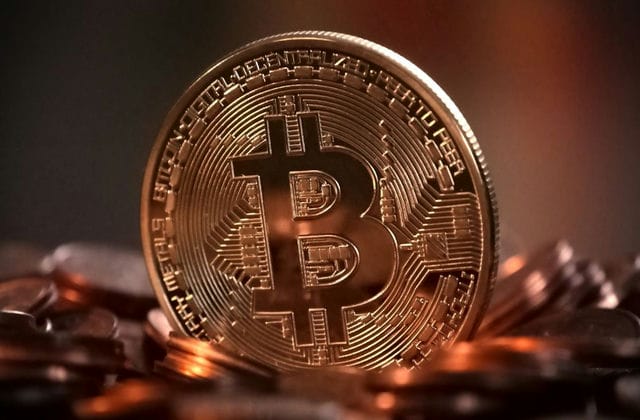The cryptocurrency we are introducing today is not primarily aimed at beating Ether, but rather at assisting it, and this cryptocurrency is called Matic Coin.
What is Matic Coin?
Matic Coin is called Polygon (Matic Network before it was renamed) and MATIC is its marketplace code name. It is a native token based on the Polygon Network platform, which was launched in October 2017, primarily by Jaynti Kanani (currently Polygon's CEO)Sandeep Nailwal (Polygon's Chief Operating Officer), and Anurag Arjun (Product Manager)The company was co-founded by three people.
One of the main purposes as to why Polygon was developed is to solve the problems associated with blockchain scalability, As we all know, since the emergence of Ether, the application of blockchain as a whole has been further enhanced, with the emergence of new projects such as DeFi (decentralised finance), GameFi and NFT, which have naturally attracted a large number of users. However, as an independent public chain that has existed for a long time, there has always been a key problem, which is the lack of efficiency. When there is only one public chain (a highway), The data on the chain is treated as traffic flow, when there is a new application project, the data to be processed naturally becomes more (traffic flow increases), then there is only one public chain (a highway), which can be imagined to cause traffic congestion problems.
At this point, Polygon was created to help Ether solve the congestion problem on the chain, and at this point, you can see once again that Polygon is different from other block chains in that it is not intended to be a better independent public chain to replace Ether's block chain.

Rather, it started out as a sidechain to Ether, which in turn facilitated the scalability of the Ether chain, giving Polygon its nickname as a helper to Ether.
Matic coin-related features
Layer 2 Scaling Solution
Polygon, as the sidechain of Ether, offers a number of scale-out solutions, such as Polygon Edge and Polygon Avail, which further enhance the scalability of Ether as a whole. This greatly reduces the burden on the main chain.
Proof-of-stake (POS) consensus mechanism
The Matic Coin network operates through a combination of proof-of-stake and block production models to shorten the overall block release time, and checkpointing and fraud proofing mechanisms to ensure a high degree of decentralization across the Polygon network and to ensure asset security through these verification processes.
Plasma Chain
Polygon's Plasma Chain is a cross-chain transaction channel between the Polygon network and Ether. It is primarily used to support the transfer of MATIC coins and other tokens on Ether (such as ETH, ERC-20, ERC-721, etc.), while using the Plasma Chain as a transport bridge between Ether and the Polygon platform, allowing users to use some DeFi platforms or DApps, users will have more options when using them.
Transaction speed and cost advantages
According to statistics, the Polygon network can process 65,000 transactions per second, with an average block confirmation time of around 2 seconds. This is several dozen times lower than Ether.
Matic coin prices
The current price of a Matic coin falls around $0.90.
In April 2019, Matic coin was launched as an IEO on the Cryptocurrency exchange, with the price initially falling around $0.0035, before breaking through $0.01 in May, and according to research and analysis by the large trading platform BitMEX, Matic coin was also the main coin among the many IEO projects at that time that had a significant Matic was also one of the major coins that showed a significant increase in price compared to its initial trading price.
For a long time, the Matic coin price fluctuated mainly in the $0.01 to $0.05 range until 2021, when the cryptocurrency market was booming again, and the Matic coin, like most other cryptocurrencies, kept up with the growth trend and saw a significant breakthrough in price, rising over $0.10.
In addition, probably because many DeFi (decentralized finance) and other projects are running on the Maticcoin platform (Polygon), the number of users on the platform has grown considerably, with the owner of the NBA's Mavericks (Mark Cuban) being one of Polygon's loyal users.
This brought the Matic coin price to its first price peak of the year, rising to $2.45 in May of the same year. If you look at the price at the beginning of 2021 ($0.03), the growth is almost 90 times higher, which is quite impressive.
Matic Coin is currently ranked 13th in the global ranking of cryptocurrencies with a market capitalization of $7.5 billion and an average 24-hour trading volume of approximately $380 million by the world's leading cryptocurrency analysis website.
Disadvantages of Matic Coin
Although Polygon, as an extension to Layer 2, has demonstrated its value in terms of performance improvements and applications, which in turn has attracted many users to the Polygon platform, it still has a number of drawbacks.
Competition from other extensions
As with Layer 1, new independent public chains are appearing all the time, and Polygon, as an extension to Layer 2, is likely to see similar extensions in the future, and it will be a test to see if Polygon can maintain its strengths in the face of the competition. Once a better scaling project emerges, it is only natural that existing investors will start to lose interest in it, thus affecting the value of the Matic coin.
Blockchain Security
Although Polygon, as an extension to Layer 2, has further improved the functionality of the blockchain, it may have neglected some of its security. have the original security benefits of Ether.
Dependency on Ethernet
Polygn, as a second layer extension to Ether, is certainly a good help to improve the performance of Ether, but this may also be a double-edged sword for Polygon, because its original value can be considered to be dependent on Ether, and if, hypothetically, Ether disappears one day (although the chances are slim...), then In the unlikely event that Ether disappears (although the chances are slim...), then Polygon's original value will also be affected, which will in turn affect the performance of the Matic coin.
How do I buy a Matic coin?
I think one of the easiest ways to get a Matic coin is to buy a Matic coin directly.
Basically, you can just go to a cryptocurrency exchange and buy it directly. For a coin like Matic, which is in the top tier of market capitalization, basically all exchanges offer Matic coin pairs and users can buy Matic coins directly using fiat currency.
If you want to trade Matic coins on a larger market, then you should consider the larger cryptocurrency exchanges, such as Binance and OKX, which have Matic coins on their shelves and can trade Matic coins mainly in USDT or USD.

How can I earn more Matic coins?
If you want to earn more Matic coins, do you know how else you can buy Matic coins through exchanges?
You can use your Matic coins to earn additional interest on your Matic coins, and there are three platforms that you can use to earn interest on your Matic coins.
Cryptocurrency Exchange
The first one is the Cryptocurrency Exchange. I think the first exchange that an investor who enters the cryptocurrency world will know is the Cryptocurrency Exchange, as it is the largest cryptocurrency exchange in the world. For a higher interest rate, you can use Staking, which can be tied for up to 90 days and earn a 19.6% interest rate.
Crypto.com
Crypto.com is also one of the world's leading cryptocurrency companies, with its own Crypto.com platform for cryptocurrency beginners in addition to its cryptocurrency exchange.
On the Crypto.com platform, you can earn interest on your Matic coins by locking them up and earning interest. Currently, you can earn an annualized interest rate of 1.15% on Matic coins deposited on demand, and 11% for the longest binding period (3 months). CRO coins), you can get up to 12.5%.
What does the future hold for Matic Coin?
Polygon is a new extension solution that offers a friendly ecosystem for developers and projects such as DApps and Smart Contracts, which in turn greatly enhances the usability of the Polygon platform. According to the Polygon website, there are currently over 37,000 DApps on the Polygon platform. These applications include projects such as DeFi, GamFi, NFT, etc. Since so many applications are built on Polygon, it is certain that many users will enter the Polygon platform in the future, and with the transaction efficiency and low transaction fees we mentioned at the beginning, it is natural that the number of users will increase even further. Therefore, from this point of view, it must be said that Polygon's future prospects are very promising, and this will naturally lead to an increase in the price of Matic. It's not clear that some new project will suddenly emerge and overtake the Polygon platform.
On the whole, Polygon, as an extended solution to Ether, has demonstrated its efficiency and low cost in trading, and this has naturally attracted many investors to join the Polygon platform, thus allowing Matic Coin to be ranked among the top 20 global cryptocurrencies. However, with the future development of blockchain, there are bound to be a number of projects of the same nature that will emerge one after another, and there is no shortage of competition between them.





























